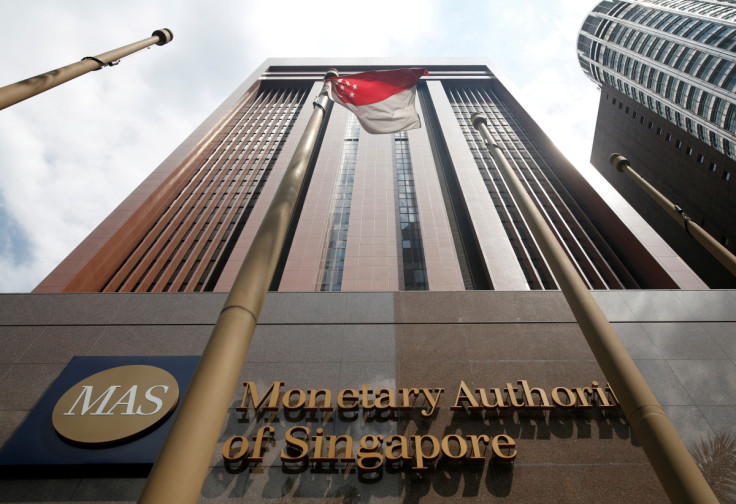Singapore Tightens Policy, Keeps Door Open For More Moves On Hot Inflation

Singapore tightened monetary policy as expected for the fourth time this year to combat inflation running near a 14-year high, and left the door open for further policy action as it warned of risks to the growth and price outlook.
The move by the Monetary Authority of Singapore (MAS) coincided with separate data showing the city-state's economy outperformed in the third quarter, and extends a synchronised tightening campaign by several countries, led by the U.S. Federal Reserve.
The MAS said it will re-centre the mid-point of its exchange rate-based policy band up to prevailing levels but kept the slope and width of the band unchanged.
The central bank made two off-cycle tightening moves in January and July to rein in soaring inflation in the trade-reliant Asian financial hub.
Friday's move, seen by some as less aggressive as MAS adjusted only one of the three levers in its policy band, marked the fifth tightening since last October.
"The MAS probably didn't make another double-barrel move because of the sharply higher and still rising global and local interest rates," said Song Seng Wun, an economist at CIMB Private Banking. "Rising rates should help to cool some of the local demand pressure too."
MAS last made a double-barrel move - adjusting two policy levers - in April. Analysts were split on how aggressively MAS would tighten this round.
The central bank said all the tightening moves so far will further reduce imported inflation but cautioned about persistent cost pressures - a common theme for the Fed and many other policymakers as they battle rampant inflation even as recession risks have intensified.
"The Singapore economy will grow at a slower pace in tandem with weakening global demand," MAS said.
"However, core inflation will stay elevated over the next few quarters, as imported inflation remains significant and a tight labour market supports strong wage increases," it added in its statement.
Hours after the policy move, the government proposed a S$1.5 billion ($1.05 billion) inflation-relief package for all Singaporean households. [L1N31F0DJ]
The city-state's economy, which has fully opened up after the country eased COVID-19 curbs, expanded by 4.4% in the third quarter, easily beating consensus of 3.4% growth, according to advance estimates from the Ministry of Trade and Industry also released on Friday.
Growth was boosted by the services and construction sectors.
The Singapore dollar strengthened against the U.S. dollar, and was last up 0.64% at $1.4214. It is Asia's best performing currency this year despite about a 5% loss on the greenback, compared with double-digit drops for most of its regional peers.
RISKS TO OUTLOOK
The MAS manages monetary policy through exchange rate settings, rather than interest rates, as trade flows dwarf its economy.
It adjusts its policy via three levers: the slope, mid-point and width of the policy band, which let the Singapore dollar rise or fall against the currencies of its main trading partners within an undisclosed band.
The core inflation rate -- the central bank's favoured price measure - rose to 5.1% in August year-on-year. It was 4.8% in July.
MAS said core inflation is likely to stay at about 5% for the rest of 2022, and into early 2023.
On a quarter-on-quarter seasonally adjusted basis, GDP expanded 1.5% in July-September.
The central bank said growth in Singapore's key trading partners should stay positive in 2023, but warned of risks to the outlook.
"However, further shocks, including from geopolitical tensions, could drive inflation higher and cause full-year recessions in some key economies."
($1 = 1.4229 Singapore dollars)
© Copyright Thomson Reuters {{Year}}. All rights reserved.





















